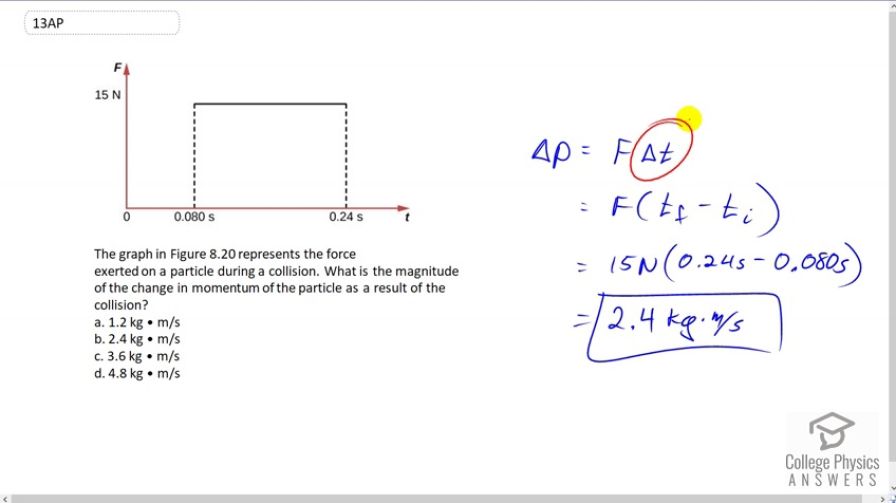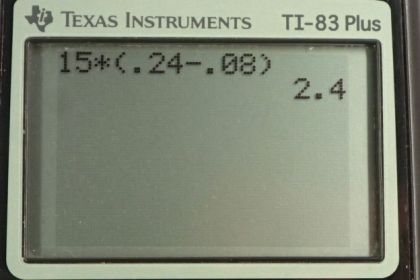Question
The graph in Figure 8.20 represents the force exerted on a particle during a collision. What is the magnitude of the change in momentum of the particle as a result of the collision?

Final Answer
(b)
Solution video
OpenStax College Physics for AP® Courses, Chapter 8, Problem 13 (Test Prep for AP® Courses)

vote with a rating of
votes with an average rating of
.
Calculator Screenshots
Video Transcript
This is College Physics Answers with Shaun Dychko. Change in momentum is also known as impulse and it equals the force exerted multiplied by the time over which the force is exerted. This is the average force and in this case, the average force is well, just the force because it's a constant force. You can also think of it as the area underneath this force time curve. So we're finding the area of this rectangle in other words. So this is going to be force times final time minus initial time, and that's going to be 15 newtons times 0.24 seconds minus 0.08 seconds. This gives 2.4 kilogram meters per second. So the answer is B.
